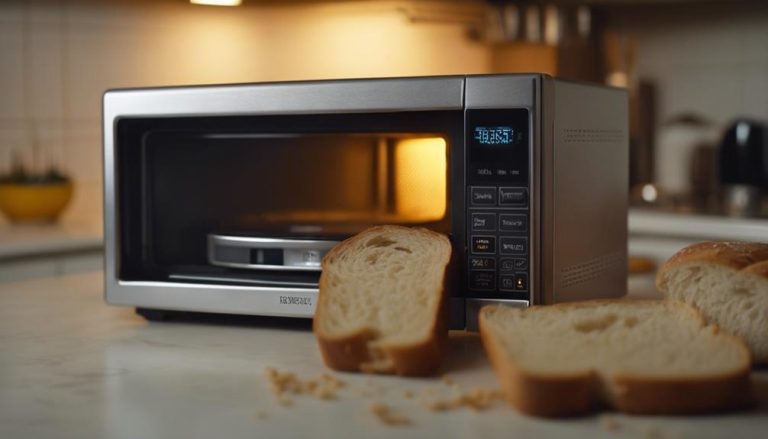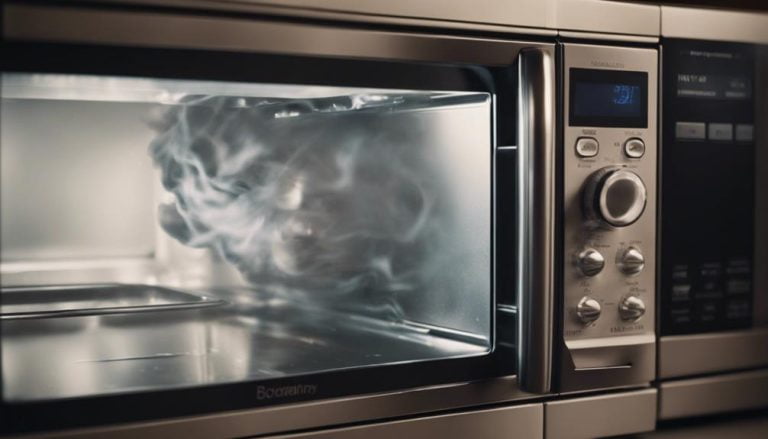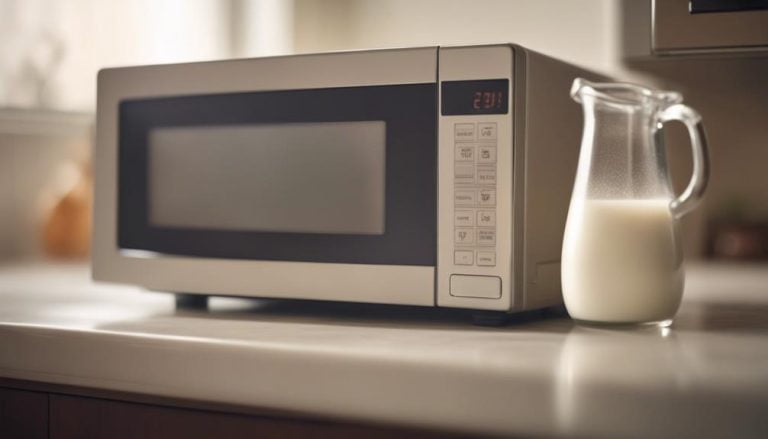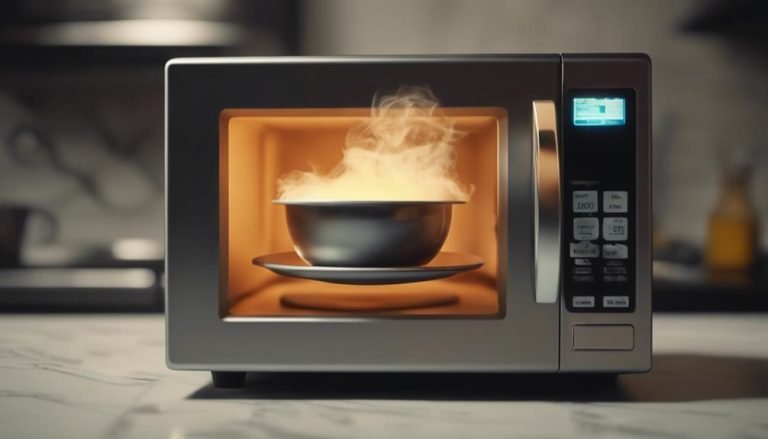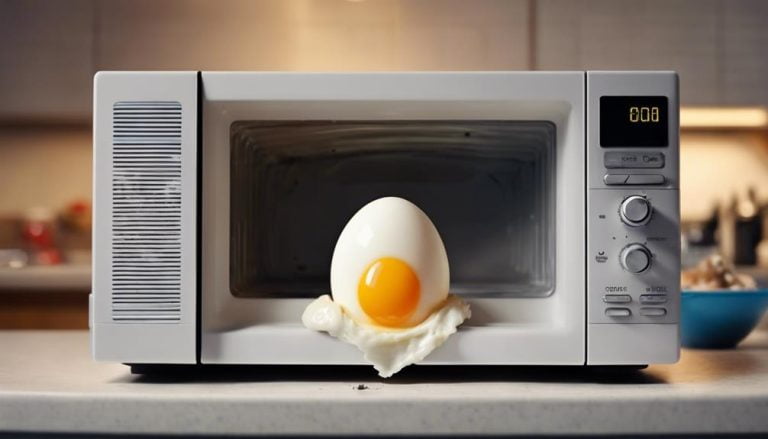Can You Microwave Fish Sticks
Yes, fish sticks can be microwaved. However, microwaving fish sticks may result in a less crispy texture compared to other cooking methods such as baking or frying.
The microwave can make the breading on the fish sticks soft and soggy instead of crispy. Additionally, microwaving may not evenly heat the fish sticks, leading to some parts being overcooked while others remain cold.
Therefore, while microwaving fish sticks is possible, it may not be the ideal cooking method for achieving the desired taste and texture.
Key Takeaways
- Microwaving fish sticks is possible but may result in less crispy texture.
- Safety is crucial, ensure fish sticks reach 165°F for safe consumption.
- Reheating fish sticks in microwave is quick and convenient.
- Proper microwaving maintains taste, texture, and safety standards.
Safety of Microwaving Fish Sticks
When microwaving fish sticks, ensuring they reach an internal temperature of 165°F (74°C) is crucial for safe consumption. This temperature is necessary to kill any harmful bacteria present in the fish.
Properly microwaving fish sticks not only ensures safety but also helps maintain their quality. By following recommended guidelines, you can enjoy crispy edges while still guaranteeing that the fish sticks are cooked through.
It is essential to prioritize safety when microwaving fish sticks to prevent foodborne illnesses. By adhering to internal temperature recommendations and using proper cooking techniques, you can enjoy a delicious and safe meal. Remember to check the internal temperature before serving to ensure that the fish sticks are safe to eat.
Reheating Fish Sticks in Microwave
Consider utilizing a microwave-safe plate with paper towel or parchment paper to effectively reheat fish sticks while maintaining their texture.
When reheating fish sticks in the microwave, positioning them around the edges of the plate promotes even heating.
To achieve crispy edges, using a microwave crisper pan is recommended.
This quick and safe method is ideal for reheating frozen fish sticks, ensuring they reach an internal temperature of 165°F for food safety.
Microwaving Frozen Fish Sticks
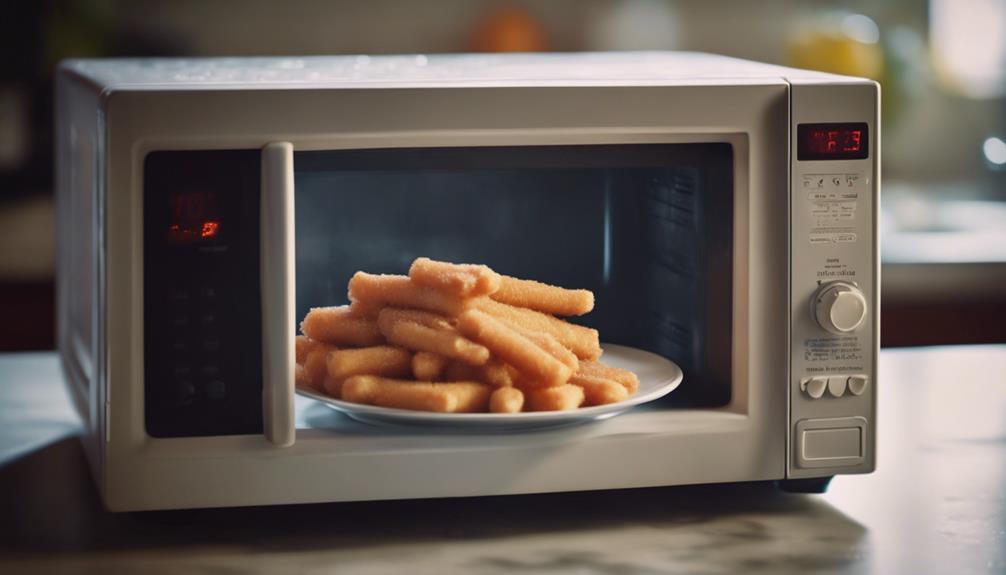
When microwaving frozen fish sticks, it is essential to consider the cooking time and method to ensure they are heated thoroughly. Achieving the desired texture and taste can be enhanced by using proper microwave-safe cookware and techniques.
Additionally, adhering to safety precautions such as ensuring the fish sticks reach the recommended internal temperature is crucial for safe consumption.
Cooking Time and Method
Microwaving frozen fish sticks is a convenient and efficient method of cooking, particularly suited for those seeking a quick meal solution.
Ensure proper heating by arranging fish sticks on a microwave-safe plate and positioning them around the edges for more even cooking.
Use a microwave crisper pan to achieve crispy edges, heating for 1 minute, flipping, and then heating for another 30-60 seconds until golden brown.
The internal temperature of fish sticks should reach 165°F (74°C) when cooking in the microwave to ensure they are fully heated.
Following recommended tips for microwaving fish sticks can help maintain their taste and texture, providing a convenient and delicious meal option.
Texture and Taste
To enhance the overall dining experience, the proper preparation of frozen fish sticks in the microwave is crucial to maintain their desired texture and taste. Microwaving frozen fish sticks can be a convenient way to enjoy a quick meal, but attention to detail is key to achieving optimal results.
Ensuring that the fish sticks reach an internal temperature of 165°F is essential for both safety and taste. Proper microwaving techniques can help preserve the texture of the fish sticks, preventing them from becoming overly soggy.
Additionally, utilizing a microwave-safe plate and preheated microwave crisper pan can contribute to achieving a crispier exterior, enhancing the overall taste and mouthfeel of the fish sticks. Checking the internal temperature before serving is vital to guarantee that the fish sticks are thoroughly cooked and enjoyable.
Safety Precautions
What key safety precautions should be followed when preparing frozen fish sticks in the microwave to ensure proper cooking and enjoyment? When microwaving frozen fish sticks, it is essential to prioritize safety measures to guarantee a delicious outcome. Here are some crucial safety precautions to consider:
- Check Internal Temperature: Ensure the fish sticks reach an internal temperature of 74°C or 165°F for safe consumption.
- Use Microwave-Safe Plate: Arrange the fish sticks on a microwave-safe plate to promote even heating.
- Consider Microwave Crisper Pan: Utilize a preheated microwave crisper pan for achieving a crunchy texture.
- Verify Heating: Always check the internal temperature of the fish sticks before serving to confirm they are thoroughly heated.
Cooking Fish Sticks in Microwave

When cooking fish sticks in the microwave, it is essential to follow proper heating guidelines to ensure safe consumption.
To achieve optimal results, arranging the fish sticks on a microwave-safe plate and utilizing a preheated microwave crisper pan for crispiness are recommended.
Understanding microwave cooking tips and heating time suggestions can help enhance the overall cooking experience.
Microwave Cooking Tips
Consider utilizing the microwave as a convenient and efficient method for cooking fish sticks, particularly when they are already precooked and frozen. Here are some essential microwave cooking tips for preparing delicious fish sticks:
- Ensure the internal temperature reaches 165°F (74°C) for thorough heating.
- Use a microwave-safe plate and position the fish sticks around the edges for even cooking.
- For crispy edges, consider utilizing a microwave crisper pan.
- Microwaving frozen fish sticks at medium power in a 1000-watt microwave can help maintain taste and texture, ensuring they are fully cooked and golden brown.
Heating Time Suggestions
Efficiently heat fish sticks in the microwave by following these recommended heating time suggestions. It is crucial to ensure the internal temperature of the fish sticks reaches 165°F before serving to guarantee they are thoroughly cooked. For optimal results, consider using a microwave crisper pan and flipping the fish sticks halfway through the cooking process to achieve crispy edges. Positioning the fish sticks around the edges of the plate can help in faster and more even microwaving. Remember to exercise caution when handling hot fish sticks from the microwave and allow them to stand for 1 minute before serving.
| Quantity of Fish Sticks | Microwave Heating Time | Internal Temperature |
|---|---|---|
| 4 sticks | 50-60 seconds | 165°F |
| 8 sticks | 2 minutes | 165°F |
Microwaving Fish Sticks: Time Guidelines
For optimal results when microwaving fish sticks, follow these time guidelines to ensure even heating.
- Cook 4 sticks for 1 minute, flip, then microwave for an additional 30 seconds.
- For 8 fish sticks, microwave for 2 minutes, flip, then cook for another 1 minute.
- Use a microwave-safe plate lined with parchment paper for best results.
- Check the internal temperature of the fish sticks to guarantee they reach at least 165°F for safe consumption.
Tips for Microwaving Fish Sticks

When microwaving fish sticks, it is essential to follow specific guidelines to ensure optimal results. To guarantee safe consumption, ensure the internal temperature reaches 165°F or 74°C.
It is advisable to use a microwave-safe plate, arranging the fish sticks around the edges for more even heating. For a crispier texture, consider using a microwave crisper pan and adhere to the recommended cooking times.
Proper microwaving techniques do not compromise the taste or texture of fish sticks if done correctly. By following these tips, you can enjoy delicious and perfectly cooked fish sticks in no time.
Frequently Asked Questions
Can I Microwave Fish Sticks if They Are Not Fully Cooked After Following the Package Instructions?
If fish sticks are undercooked following package instructions, you may microwave them for quick completion. However, other methods like oven baking, air frying, pan searing, grilling outdoors, or deep frying can also be used based on personal preference and desired results.
How Can I Prevent Fish Sticks From Becoming Soggy or Rubbery When Microwaving Them?
To maintain the crispy coating of fish sticks when microwaving, consider using an oven baking method or an air fryer. Serve with a tangy dipping sauce and lemon wedges for added flavor. Following these steps will prevent them from turning soggy or rubbery.
Are There Any Health Risks Associated With Microwaving Fish Sticks?
When considering health concerns related to microwaving fish sticks, it is crucial to focus on cooking methods, microwave safety, and seafood safety. Understanding microwaving techniques, nutritional value, and using reputable fish stick brands can enhance food safety.
Can I Add Additional Seasoning or Toppings to Fish Sticks Before Microwaving Them?
For a flavorful twist, enhance fish sticks with seasonings like lemon pepper or garlic powder, and toppings such as Parmesan cheese or breadcrumbs before microwaving. Get creative with your flavor combinations and experiment with various seasonings to elevate your dish.
How Should I Store Leftover Microwaved Fish Sticks to Ensure They Remain Safe to Eat Later?
To ensure leftover microwaved fish sticks remain safe to eat later, proper storage is key. Cool completely before sealing in airtight containers or Ziploc bags. Freeze for extended storage. Reheat single portions for optimal results, checking for spoilage signs beforehand.
Conclusion
In conclusion, microwaving fish sticks is a convenient and efficient way to enjoy this crispy seafood snack. By following proper heating instructions and using microwave-safe cookware, you can quickly prepare delicious fish sticks with minimal effort.
The sound of the microwave beeping, the aroma of crispy fish wafting through the air, and the satisfying crunch with each bite will make your taste buds dance with delight. Enjoy a quick and tasty meal with microwaved fish sticks.

